Our Changing World for Thursday 22 May 2008
On This Programme
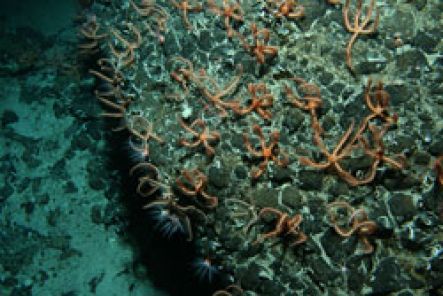
Dense aggregation of brittlestars on rock with arms feeding in water current. Also soft corals, sponge and worms. Credit: NIWA ©2008
A group of marine scientists, exploring a vast underwater mountain ridge south of New Zealand, captured the first images of a submerged peak colonised by brittlestars. The summit of one of the seamounts in the Macquarie Ridge is covered with the starfish-like creatures, living arm tip to arm tip and waving their arms to catch passing food. Usually seamount peaks support a community of corals and sponges, but the research team believes that this particular underwater mountain top, dubbed Brittlestar City, is the first dense aggregation of brittlestars. Its success is most likely due to the summit's flat shape and the strong circumpolar currents that sweep the top and carry off any potential predators.
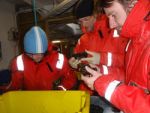 The multi-disciplinary team from New Zealand and Australia sampled eight seamounts along Macquarie Ridge during a month-long expedition voyage aboard the research vessel Tangaroa. They returned with thousands of specimens, some of which have never been recorded in the region and some that may be new to science.
The multi-disciplinary team from New Zealand and Australia sampled eight seamounts along Macquarie Ridge during a month-long expedition voyage aboard the research vessel Tangaroa. They returned with thousands of specimens, some of which have never been recorded in the region and some that may be new to science.
The voyage was part the Census of Marine Life seamount programme. (image credit: NIWA ©2008)
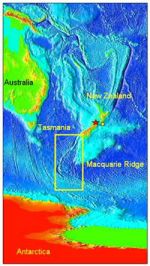 The Macquarie Ridge formed at least twelve million years ago and stretches 1400 kilometres south from New Zealand to just above the Antarctic circle. The ridge is one of the few places where the Antarctic Circumpolar Current is detoured in its endless clockwise churn, which plays a vital role in the global marine ecosystem by mixing and merging waters of the Atlantic, Pacific and Indian oceans.
The Macquarie Ridge formed at least twelve million years ago and stretches 1400 kilometres south from New Zealand to just above the Antarctic circle. The ridge is one of the few places where the Antarctic Circumpolar Current is detoured in its endless clockwise churn, which plays a vital role in the global marine ecosystem by mixing and merging waters of the Atlantic, Pacific and Indian oceans.
Oceans worldwide contain an estimated 100,000 seamounts rising at one kilometer above the seabed. Fewer than 200 have been sampled in detail.
Left: Map showing the location of Macquarie Ridge (image credit: NIWA ©2008).
Images courtesy of Jan Lauwereyns.
Jan Lauwereyns (pictured above right) is a neuro-psychologist at Victoria University and he's particularly interested in how chemical signals work in the brain. His focus is on the brain's reward system, how it is influenced by neurotransmitters and how we voluntarily control our actions, make decisions and learn. (Above left - a participant in the study submits to being wired up) However, Jan Lauwereyns is also a writer who has published several volumes of poetry in Dutch and English. This week Jan talks about how his poetry both influences and benefits from his science. Next week he'll explain what his research has revealed about how the brain.
Next time you use a sun screen lotion, consider the fact that it contains nano-particles, tiny particles of a size somewhere between biological cells and single atoms and molecules. A number of consumer products contain nano-particles, and they could have a range of future applications in medicine and the environment - but little is known about how they affect our bodies and ecosystems. Elizabeth Connor attended a nanotechnology conference in Oxford recently to canvass views about the risks associated with nano-particles.
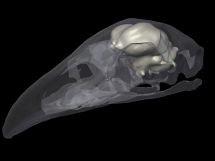
CT image of moa skull.
MRI scans of frozen kiwi brains may shed light on the bird's unusual behaviours. A technique pioneered at the University of Auckland opens the way for detailed examinations of the brains of endangered species - without damaging precious specimens. Dacia Herbulock speaks to researcher Jeremy Corfield about what his look inside the kiwi's head has revealed.
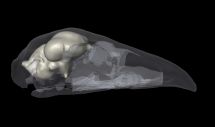
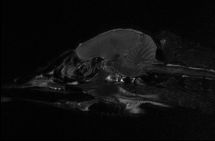
CT image of moa brain (left) and an MRI image of a kiwi brain (right).
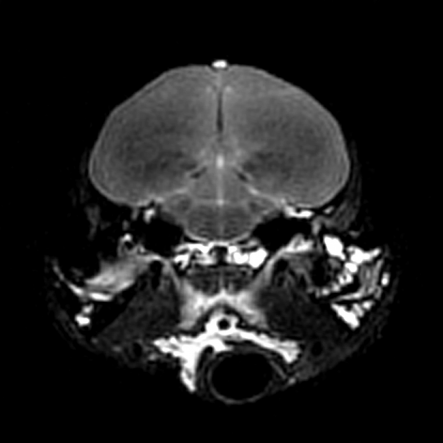
MRI image of a North Island brown kiwi.
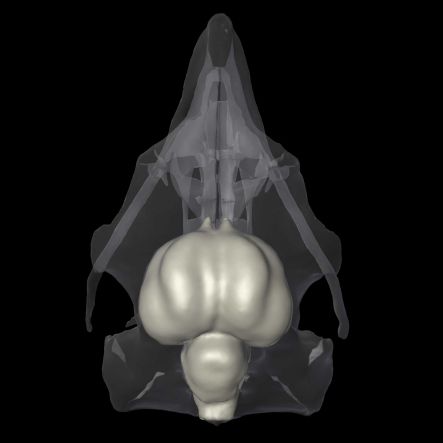
CT image of the bush moa.
MRI images are from the Centre for Advanced MRI at the University of Auckland.
CT images are from the Greenland Clinical Centre and were reconstructed using the facilities at the Biomedical Imaging Research Unit at The University of Auckland.

